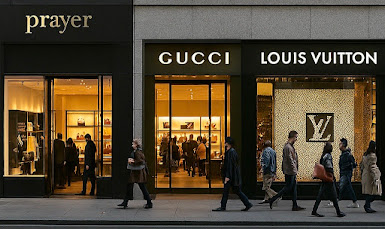Luxury in Flux: Trade Wars, TikTok, and the Cracks in the High-End Market
It used to be simple: luxury was silent, mysterious, and untouchable. A $3,000 bag meant status. A limited release drop meant prestige, and you didn’t ask about the price—if you had to, you couldn’t afford it.
But in 2025, that illusion is crumbling.
Luxury’s Growing Identity Crisis
As the US-China trade war escalated, luxury brands found themselves in an uncomfortable crossfire. China, once the golden goose of luxury consumption, became a battleground. While brands avoided taking sides publicly, internally they began reworking supply chains, repackaging PR strategies, and bracing for cultural backlash.
At the same time, TikTok exploded into a global platform of exposure. Young creators started breaking down luxury’s smoke and mirrors:
- Revealing how prices vary wildly by region
- Calling out brands for repackaging the same products
- Exposing influencers who never actually own the luxury they flaunt
The luxury ecosystem—built on mystique, aspiration, and exclusivity—suddenly looked more like a well-orchestrated social illusion.
The TikTok Effect
TikTok didn’t just shake up fashion trends. It ripped open the vault on luxury’s secrets. Creators began openly discussing resale values, counterfeit alerts, and the absurdity of some luxury pricing. Gen Z and Millennials, already skeptical of material status symbols, started valuing “stealth wealth” and authentic experiences over loud logos.
So what happens when the illusion breaks?
Some brands are adapting—quiet luxury is in, capsule drops are trending, and vintage resale is now a power move. Others? Still clinging to the old playbook, hoping this moment will pass.
Is This the End of Luxury as We Know It?
Not quite—but the old model is on life support.
Barriers that once protected luxury (like exclusivity, opaque pricing, and brand mystique) are being challenged by:
- Authentication tech (NFTs, blockchain-tracked bags)
- Peer-to-peer resale platforms
- Digital-native consumers who demand value and transparency
Even regulations are catching up. Some governments are targeting misleading pricing schemes and cracking down on counterfeits.
Luxury is shifting from logo-chasing to legitimacy-chasing—and that’s a radical change.
And Then… There’s TikTok’s Ownership Battle
In a dramatic twist, former President Donald Trump reversed course and lifted the long-debated ban on TikTok. After years of speculation, lawsuits, and political theater, TikTok was reauthorized for operation in the U.S.—a move that sent shockwaves through both political and business communities.
Why? Possibly because TikTok had become too embedded in the economy—especially in fashion, lifestyle, and e-commerce. It’s not just an app. It’s a virtual marketplace, a marketing platform, and a cultural driver all in one.
Where Do We Go From Here?
The luxury market is at a crossroads. It can: Embrace transparency and digital innovation, or Hold tight to outdated illusions and risk losing cultural relevance


.png)

.png)

.jpeg)


.jpeg)